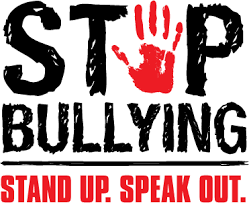With the end of summer comes the beginning of the school year. For some children and parents, this is an exciting time. For others, it is dreaded. For parents of children with autism, this time of year comes with much anxiety. Last year, I wrote about the general challenges of returning to school. This year, and inspired by a friend’s post on social media about their son with autism, I want to delve into the topic of bullying.
Children with autism and other developmental disabilities are victims of bullying at alarming rates — 60% report being bullied regularly compared to 25% of the general population. Mind you, 25% is already a high number. Data from a survey conducted by the Interactive Autism Network (IAN) found that children with ASD attending public school in 5th to 8th grade were at greatest risk of bullying. Additionally, children who were categorized as “Asperger’s” were victims of bullying more frequently than other categories of ASD. Researchers suggested this might be due to the fact children categorized as Asperger’s tend to be placed in general classroom settings compared to children in other ASD categories who might be placed in special education classrooms or have an aide accompanying them during the school day.
 The topic of bullying has received much attention in the media over the last few years and there are efforts to curtail bullying. Our local schools have a program in which the school counselor meets with each class regularly to discuss topics related to bullying, conflict resolution, and appropriate social interactions. When I heard about this program, I was thrilled. Children in the community are being exposed to this information and hearing about strategies for navigating social interactions at school. It also made me wonder how much of the information the children hear would translate into appropriate behavior. For instance, when studying the topic of gun safety, Dr. Ray Miltenberger has found that exposing children to what constitutes safe behaviors does not translate into them engaging in these safe behaviors when presented with a real-life situation. Thus, he has used behavioral skills training to teach safety skills to prevent firearm injury. Perhaps a similar approach could be used in the area of bullying.
The topic of bullying has received much attention in the media over the last few years and there are efforts to curtail bullying. Our local schools have a program in which the school counselor meets with each class regularly to discuss topics related to bullying, conflict resolution, and appropriate social interactions. When I heard about this program, I was thrilled. Children in the community are being exposed to this information and hearing about strategies for navigating social interactions at school. It also made me wonder how much of the information the children hear would translate into appropriate behavior. For instance, when studying the topic of gun safety, Dr. Ray Miltenberger has found that exposing children to what constitutes safe behaviors does not translate into them engaging in these safe behaviors when presented with a real-life situation. Thus, he has used behavioral skills training to teach safety skills to prevent firearm injury. Perhaps a similar approach could be used in the area of bullying.
An interesting approach to decrease bullying was reported by Scott Ross & Robert Horner, where they implemented bully prevention in positive behavior support (BP-PBS). BP-PBS is a a prevention program that teaches children what it means to “be respectful” and also appropriate behaviors when faced with bullying to minimize the social rewards contacted by the perpetrator for engaging in these behaviors. From a behavior analytic perspective, by diminishing or eliminating the source of reinforcement for the bullying behavior, it would be possible to decrease instances of bullying. Although this was a small- scale study, with only six children as participants, it could serve as a blueprint for this type of work.


 Follow the
Follow the